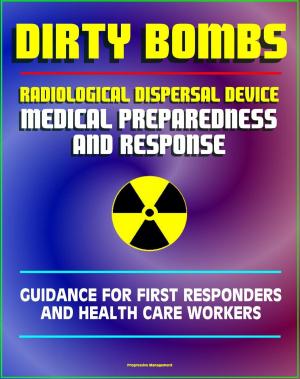21st Century Adult Cancer Sourcebook: Multiple Myeloma and Plasma Cell Neoplasms (Plasmacytoma, Macroglobulinemia, MGUS) - Clinical Data for Patients, Families, and Physicians
Nonfiction, Health & Well Being, Health, Ailments & Diseases, Cancer| Author: | Progressive Management | ISBN: | 9781465737199 |
| Publisher: | Progressive Management | Publication: | October 18, 2011 |
| Imprint: | Smashwords Edition | Language: | English |
| Author: | Progressive Management |
| ISBN: | 9781465737199 |
| Publisher: | Progressive Management |
| Publication: | October 18, 2011 |
| Imprint: | Smashwords Edition |
| Language: | English |
Authoritative information and practical advice from the nation's cancer experts about multiple myeloma and other plasma cell neoplasms includes official medical data on signs, symptoms, early detection, diagnostic testing, risk factors and prevention, treatment options, surgery, radiation, drugs, chemotherapy, staging, biology, prognosis, and survival, with a complete glossary of technical medical terms and current references.
Starting with the basics, and advancing to detailed patient-oriented and physician-quality information, this comprehensive in-depth compilation gives empowered patients, families, caregivers, nurses, and physicians the knowledge they need to understand the diagnosis and treatment of plasma cell neoplasms.
Comprehensive data on clinical trials is included - with information on intervention, sponsor, gender, age group, trial phase, number of enrolled patients, funding source, study type, study design, NCT identification number and other IDs, first received date, start date, completion date, primary completion date, last updated date, last verified date, associated acronym, and outcome measures.
Multiple myeloma and other plasma cell neoplasms are diseases in which the body makes too many plasma cells.
Plasma cells develop from B lymphocytes (B cells), a type of white blood cell that is made in the bone marrow. Normally, when bacteria or viruses enter the body, some of the B cells will change into plasma cells. The plasma cells make a different antibody to fight each type of bacteria or virus that enters the body, to stop infection and disease.
Blood cell development. A blood stem cell goes through several steps to become a red blood cell, platelet, or white blood cell.
Plasma cell neoplasms are diseases in which there are too many plasma cells, or myeloma cells, that are unable to do their usual work in the bone marrow. When this happens there is less room for healthy red blood cells, white blood cells, and platelets. This condition may cause anemia or easy bleeding, or make it easier to get an infection. The abnormal plasma cells often form tumors in bones or soft tissues of the body. The plasma cells also make an antibody protein, called M protein, that is not needed by the body and does not help fight infection. These antibody proteins build up in the bone marrow and can cause the blood to thicken or can damage the kidneys.
Plasma cell neoplasms can be benign (not cancer) or malignant (cancer).
There are different types of plasma cell neoplasms and not all of them are cancer. The following types of plasma cell neoplasms are cancer: multiple myeloma, plasmacytoma, and macroglobulinemia. Monoclonal gammopathy of undetermined significance (MGUS) is not cancer but can become cancer.
Extensive supplements, with chapters gathered from our Cancer Toolkit series and other reports, cover a broad range of cancer topics useful to cancer patients. This edition includes our exclusive Guide to Leading Medical Websites with updated links to 81 of the best sites for medical information, which let you quickly check for updates from the government and the best commercial portals, news sites, reference/textbook/non-commercial portals, and health organizations. Supplemental coverage includes:
Levels of Evidence for Cancer Treatment Studies
Glossary of Clinical Trial Terms
Clinical Trials Background Information and In-Depth Program
Clinical Trials at NIH
How To Find A Cancer Treatment Trial: A Ten-Step Guide
Taking Part in Cancer Treatment Research Studies
Access to Investigational Drugs
Clinical Trials Conducted by the National Cancer Institute's Center for Cancer Research at the National Institutes of Health Clinical Center
Taking Time: Support for People with Cancer
Facing Forward - Life After Cancer Treatment
Chemotherapy and You
Authoritative information and practical advice from the nation's cancer experts about multiple myeloma and other plasma cell neoplasms includes official medical data on signs, symptoms, early detection, diagnostic testing, risk factors and prevention, treatment options, surgery, radiation, drugs, chemotherapy, staging, biology, prognosis, and survival, with a complete glossary of technical medical terms and current references.
Starting with the basics, and advancing to detailed patient-oriented and physician-quality information, this comprehensive in-depth compilation gives empowered patients, families, caregivers, nurses, and physicians the knowledge they need to understand the diagnosis and treatment of plasma cell neoplasms.
Comprehensive data on clinical trials is included - with information on intervention, sponsor, gender, age group, trial phase, number of enrolled patients, funding source, study type, study design, NCT identification number and other IDs, first received date, start date, completion date, primary completion date, last updated date, last verified date, associated acronym, and outcome measures.
Multiple myeloma and other plasma cell neoplasms are diseases in which the body makes too many plasma cells.
Plasma cells develop from B lymphocytes (B cells), a type of white blood cell that is made in the bone marrow. Normally, when bacteria or viruses enter the body, some of the B cells will change into plasma cells. The plasma cells make a different antibody to fight each type of bacteria or virus that enters the body, to stop infection and disease.
Blood cell development. A blood stem cell goes through several steps to become a red blood cell, platelet, or white blood cell.
Plasma cell neoplasms are diseases in which there are too many plasma cells, or myeloma cells, that are unable to do their usual work in the bone marrow. When this happens there is less room for healthy red blood cells, white blood cells, and platelets. This condition may cause anemia or easy bleeding, or make it easier to get an infection. The abnormal plasma cells often form tumors in bones or soft tissues of the body. The plasma cells also make an antibody protein, called M protein, that is not needed by the body and does not help fight infection. These antibody proteins build up in the bone marrow and can cause the blood to thicken or can damage the kidneys.
Plasma cell neoplasms can be benign (not cancer) or malignant (cancer).
There are different types of plasma cell neoplasms and not all of them are cancer. The following types of plasma cell neoplasms are cancer: multiple myeloma, plasmacytoma, and macroglobulinemia. Monoclonal gammopathy of undetermined significance (MGUS) is not cancer but can become cancer.
Extensive supplements, with chapters gathered from our Cancer Toolkit series and other reports, cover a broad range of cancer topics useful to cancer patients. This edition includes our exclusive Guide to Leading Medical Websites with updated links to 81 of the best sites for medical information, which let you quickly check for updates from the government and the best commercial portals, news sites, reference/textbook/non-commercial portals, and health organizations. Supplemental coverage includes:
Levels of Evidence for Cancer Treatment Studies
Glossary of Clinical Trial Terms
Clinical Trials Background Information and In-Depth Program
Clinical Trials at NIH
How To Find A Cancer Treatment Trial: A Ten-Step Guide
Taking Part in Cancer Treatment Research Studies
Access to Investigational Drugs
Clinical Trials Conducted by the National Cancer Institute's Center for Cancer Research at the National Institutes of Health Clinical Center
Taking Time: Support for People with Cancer
Facing Forward - Life After Cancer Treatment
Chemotherapy and You















